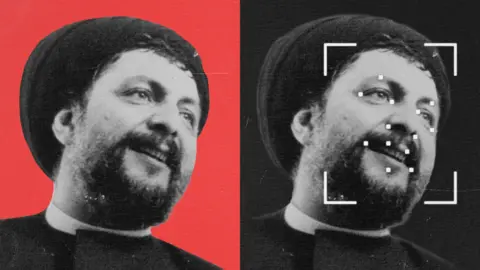A computer scientist at a university in northern England is studying an image of a corpse attempting to solve a mystery that has gripped the Middle East for nearly 50 years.
The digitised photo of a decomposed face is about to be run through a special algorithm for a BBC investigation. It originated from a journalist who saw the body in a secret mortuary in Libya in 2011. He was told it could belong to Musa al-Sadr, the charismatic cleric who vanished in Libya in 1978.
Sadr's disappearance has spawned countless conspiracy theories, with some believing he was killed while others claim he is alive and being held in Libya. For his ardent followers, his disappearance holds the same level of intrigue as the assassination of U.S. President John F. Kennedy.
His followers have bestowed upon him the title of imam, an unusual honor for a living Shia cleric, recognizing his work on behalf of the Shia community. Sadr's mysterious disappearance resonates deeply, echoing the lore of the 'hidden' 12th imam in Shia Islam, who is believed to have not died but will return to bring justice to the world.
The question of Sadr’s fate is further complicated by political tensions in the region. Some believe he could have shifted the Iranian revolution in a more moderate direction had he not vanished just before it began. The body found in the mortuary matched witnesses' accounts of Sadr’s height, but many features were unrecognizable.
Investigators from Bradford University, led by Professor Hassan Ugail, used a facial recognition algorithm on the mortuary photo to calculate the probability of it being Sadr's body. The results indicated a high chance of a familial connection.
During an investigation, reporter Kassem Hamadé was shown a drawer containing a corpse believed to be Sadr. The body's color, features, and reported execution-style injuries raised more questions.
The investigation faced hurdles, including brief detention by Libyan intelligence while the team sought answers about Sadr's fate.
Supporters of Sadr are divided, some affirming he is dead while others insist he is alive, insisting on the strength of their beliefs and commemorating him annually. Despite these contradictions, the investigation continues to delve deeper into the mystery surrounding a figure of great significance among Shia Muslims.





















